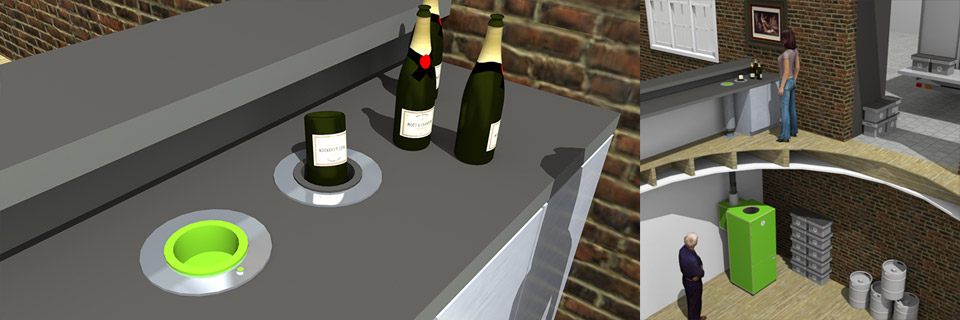
“SDS took an often cumbersome and lengthy part of our machine builds and simplified every aspect. We previously had to bring all the electrical components of our machines together and subsequently programme, wire and configure these ourselves. Our builds took longer, required outside advice which was often unavailable and was very costly, in money and staff time. Working with the team at SDS, they have taken all aspects and created an off-the-shelf solution which we no longer have to worry about. Their team is also highly knowledgeable, reactive and a pleasure to deal with. By tapping into their expertise, we are able to guarantee consistency, quality, and safety with the electrical elements of our machines. I would strongly recommend approaching SDS for any advice and guidance in this area.”
The Situation
First founded in 2011, they started out creating silent and convenient glass bottle crushing technology for the hospitality sector. They have since expanded and developed a system of waste separation, compaction, and collections for all waste types for their customers and have become one of the most sustainable waste management companies in London.
The Glassbuster machine is the most convenient, quiet, and safe glass crusher available on the market; led by their flagship product, the Bar to Basement Glassbuster, which allows venues to feed bottles through a bar top where they are compacted in the basement below.
To achieve the highest levels of safety and convenience in their machines Glassbusters required a very specific solution to automate the use of each part of their machines. With some of their venues busting over 100 tonnes of glass per month, the electrical specifications, sensors, and inverter needed to be resilient, simple to configure and understand, and cost effective.
Furthermore, the motors inside their machines are 3-phase, however Glassbusters wanted to ensure the supply requirement for their machines was single phase.

The Solution
SDS came up with a solution to run the ‘brains’ of the Glassbuster machines. Firstly, SDS proposed an appropriate Schneider Inverter to run their 3-phase motors. The inverter was also able to be programmed to control different functions of the machines to Glassbusters’ requirements. SDS were also able to source the complete range of sensors and wiring that helped to operate the machines.
The programming, wiring, and packaging of the completed drives and sensors was managed entirely by SDS so that completed units were ready for each Glassbuster machine. Glassbusters no longer had to order drives from one provider, sensors and wires from another and programme and wire everything themselves. SDS’ solution continues to save Glassbusters time and money spent ordering and installing their own sourced components, as well as being able to provide further guidance and support for any required changes to the system.
Benefits









